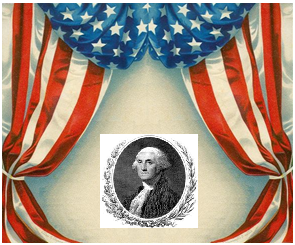Displaying the U.S. Flag Correctly Is As Simple As Reading A Book
 Every flag flying holiday many flags are displayed incorrectly, and most errors happen because the rules of flag display found in the U.S. Flag Code (Title 4 of the U.S. Code) are sometimes hard to understand and, for some, even harder to remember.
Every flag flying holiday many flags are displayed incorrectly, and most errors happen because the rules of flag display found in the U.S. Flag Code (Title 4 of the U.S. Code) are sometimes hard to understand and, for some, even harder to remember.
The usual error made is when the flag is hung on a wall so only one side of the flag is visible. Section 7i found in the Flag Code explains it this way:
When displayed either horizontally or vertically against a wall, the union should be uppermost and to the flag’s own right, that is, to the observer’s left. When displayed in a window, the flag should be displayed in the same way, with the union or blue field to the left of the observer in the street.
While some will find this explanation easy to understand, others find it reads as if it came from a complex government regulation, which in fact it does. What does “the flag’s own right mean,” and is this even at all important?
During the last half of the Nineteenth Century, it was common to use flags as decorations for patriotic events. Rather than being displayed as the National Flag, the Stars and Stripes was often hung and draped like so many ribbons or bows. It was common to take two U.S. flags and hang them bookmatched so that the two starry blue fields mirrored each other, and then each flag were draped back with ties to serve as decorations.
Some Americans found draping the flag improper, and they made rules to standardize the manner in which the U.S. flag would be displayed. Some even argued that the U.S. flag should never be displayed unless it was attached to a flagstaff or flagpole. Nevertheless, many felt was proper to hang a flag flat on the wall as long as it was not draped but allowed to hang flat against the wall.
In 1923 and 1924 an American Flag Convention met in Washington, D.C. and adopted a list of rules governing flag display which eventually became the U.S. Flag Code. The attendees at this flag conference represented over sixty-eight patriotic organizations, and they decided that—since the U.S. flag is a living symbol—has its own right and left side. Therefore, the flag should always be displayed on the flag’s own right, which is basically the right of the people carrying it. In other displays it gets harder to explain, and so let’s make it simple when we decide how to hang a flag on a wall so that only one side is seen.
It is as simple as reading a book. When we read a book we always start in the upper left hand corner of the page, and when we describe the flag we always say the stars and stripes, never the stripes and stars. So we read a flag hung on a wall just as we would read a book—as the stars and stripes. Whether it is hung so the stripes are horizontal or vertical a flag hung on the wall always reads the same, the stars and stripes.
If you have a question about the rules of flag display, check Colonial Flag’s Flag App for iPads, iPhones and Android devices. You don’t have the Flag App yet? Visit www.colonialflag.com and click on the icon for The Flag App to download the application on your device.


